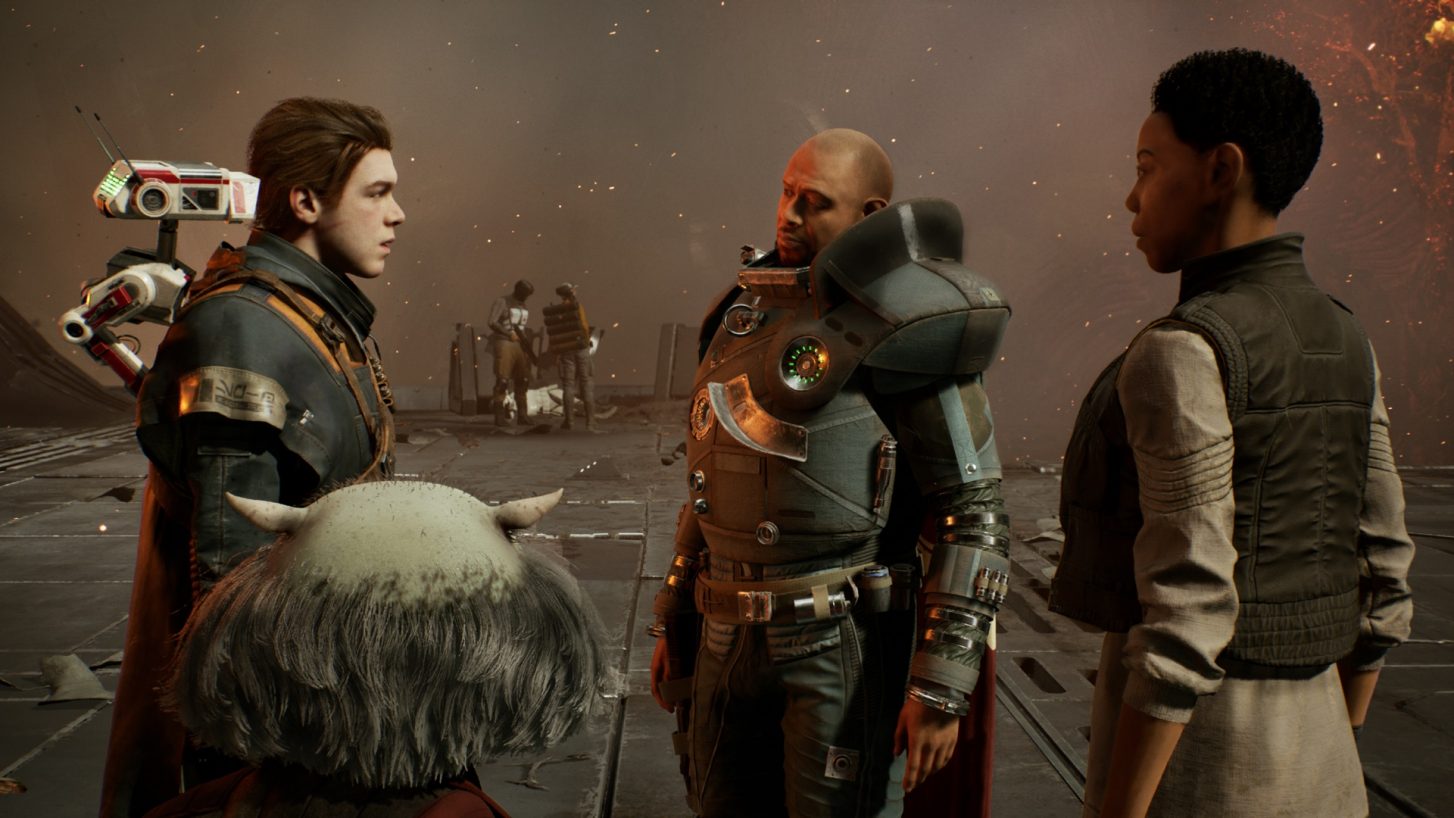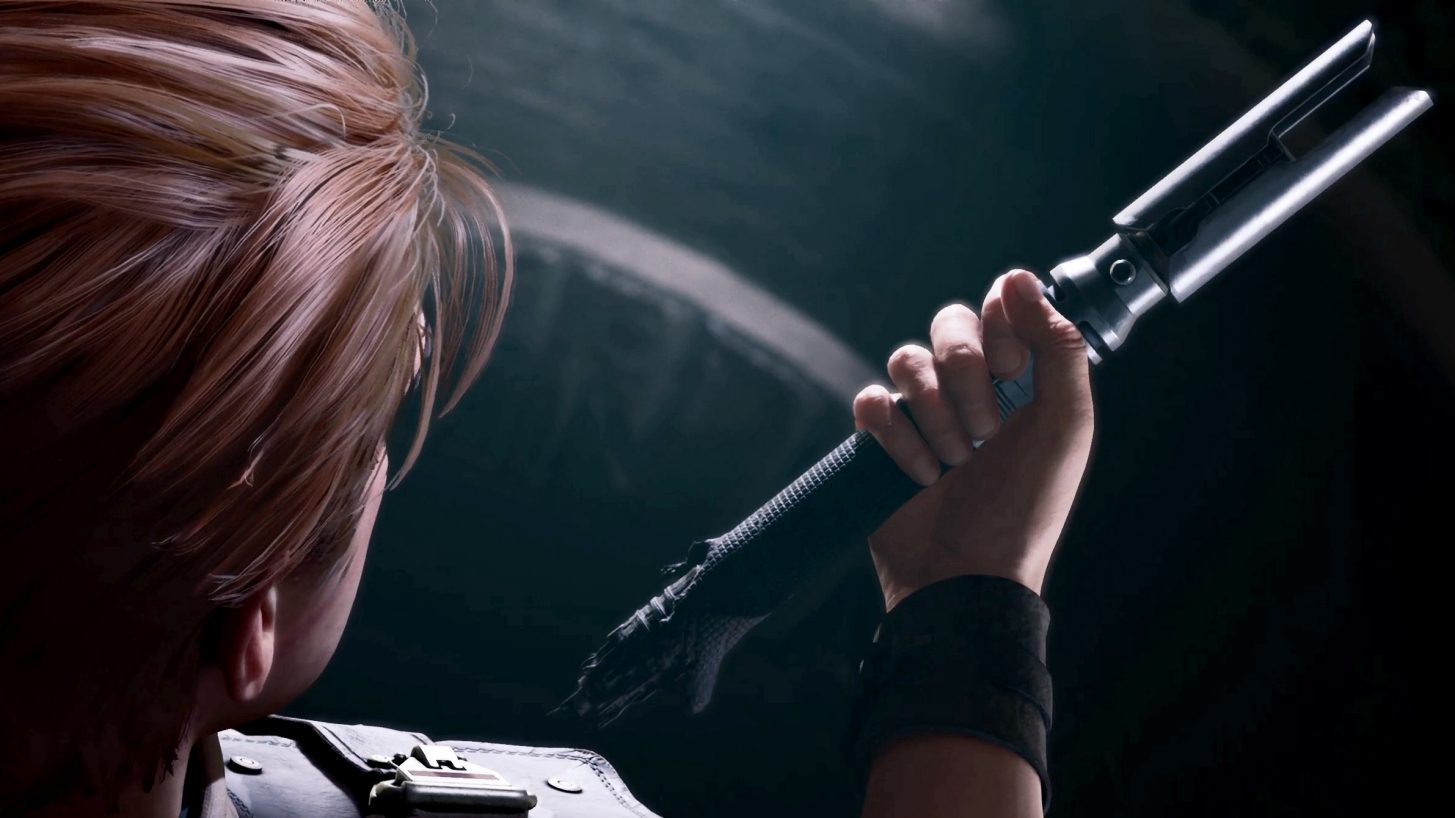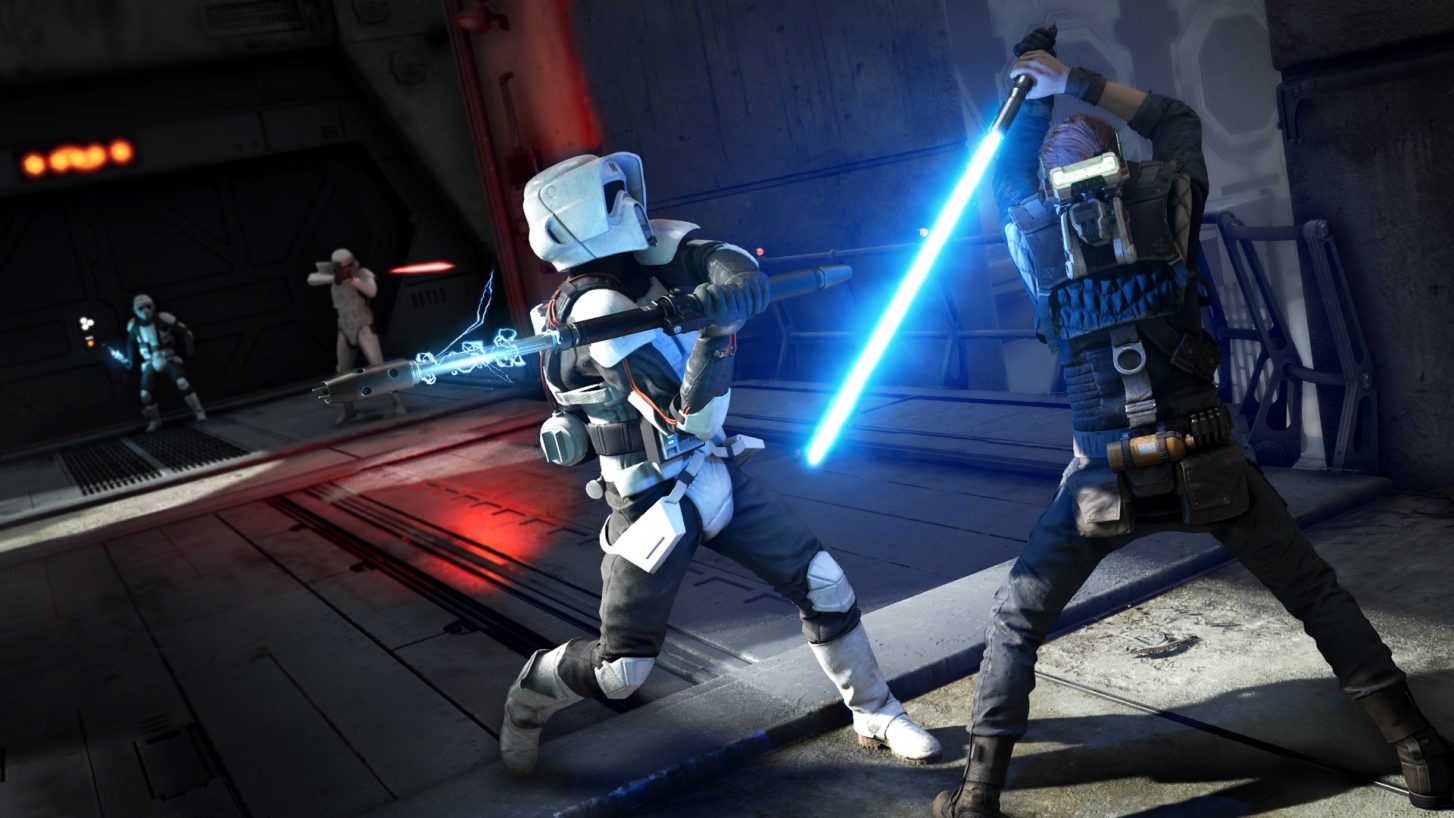People are always losing limbs in the Star Wars universe. Luke lost a hand, Darth Maul lost his legs, and Anakin lost all his limbs. Lost limbs and their robotic prosthetic replacements are such an intrinsic part of the brand that it has its own entry on the official Star Wars website and Wookiepedia—a wiki dedicated to all things Star Wars.
Publisher Electronic Art’s upcoming Star Wars Jedi: Fallen Order video game has everything a Star Wars fan could want—lightsabers, force powers, and Stormtroopers. But it won’t have dismemberment. Some fans were disappointed.
“One thing I was a little bummed about, no dismemberment,” IGN’s Ryan McCaffrey said after playing the game at E3. Developer Respawn Entertainment told McCaffery that word came from on high—Lucasfilm didn’t want limbs flying for no reason.
Lead designer Brandon Kelch confirmed this in an interview with Shacknews. “We kind of used the films as a reference… it’s used as powerful moments and… critical things,” he said. “So we’ll use it in a similar way.”

The treatment of dismemberment and prosthetics in the Star Wars films is often ham-fisted and problematic, and it’s in the franchise’s DNA to use it as a narrative crutch that punctuates various characters’ arcs. Since Respawn Entertainment is apparently following this formula in Fallen Order, fans’ disappointment over the lack of flying limbs is an opportunity to examine how Star Wars has handled the topic, and why.
Dismemberment is a big deal in the Star Wars universe. It’s used to punctuate weighty moments and give characters backstories. The first time we see a lightsaber’s power in A New Hope, Obi Wan Kenobi lops the arm off a rude cantina patron. I would argue that the lightsaber made an impact on popular culture because of how effective that scene is. One moment Obi Wan is a kindly old man, and in the next he is a deadly warrior who will coldly maim anyone who gets in his way, a defining duality of the Jedi. In The Empire Strikes Back, Luke battles the dark side of the force in a cave on Dagobah. When he attacks Darth Vader, he decapitates him only to discover the face under the helmet is his own.
Star Wars has long used physical disfigurement to signal corruption of the soul, it's a way for the movies to say that a character is turning to the "dark side," which is obviously not the case for anyone who actually lost a limb. Losing a limb is a traumatic event, one that people react to in ways as varied as the individual. The trauma isn’t always a defining characteristic, especially when prosthetics are a source of empowerment rather than pain.
It’s not just Star Wars. “It's just about a majority in movies I'd say,” James Young—a double amputee gamer who helped create a cybernetic prosthetic based on Metal Gear Solid V: The Phantom Pain—told me in an email. “I really hope people realize that this trope is very not okay... it's extremely counter-productive. Imagine if they did his for a racial or ethnic group, as was done historically? Representation and casting, everything could use improvement.”
For a film series that often makes a point of showing lightsabers severing the limbs of heroes and villains alike, Star Wars games have traditionally been light on gross bodily harm.
Above: Video of Jedi Knight II with dismemberment cheats on by SMTDEWBACK
Star Wars Dark Forces: Jedi Knight, Jedi Outcast and Jedi Academy set the standard for video game lightsaber combat. They followed the story of a rising Jedi as he lightsabered his way across the galaxy, the combat was fluid and fun, and the lightsabers didn’t separate limbs from bodies unless enabled by a mod or tweaking of your files. Jedi Outcast had a simple console command, g_saberrealisticcombat 1, that enabled dismemberment. But a later patch removed the console command and made it much harder to liberally hack off limbs. Star Wars: The Force Unleashed, the mid-aughts Star Wars game franchise, is the only lightsaber game to have a liberal limb detachment policy right out of the box.
The ESRB's—a regulating agency that assigns age ratings to video games—says T rated games (a category the ESRB considers suitable for ages 13 and up) may contain violence, which it describes as “scenes involving aggressive conflict. May contain bloodless dismemberment.” Lightsabers cauterize wounds so there’s no blood, and Star Wars: The Force Unleashed shipped with a T rating.
Even with a T rating, animating limb-loss may not be worth it. It’s hard to pull off realistic dismemberment in video games.

“It’s quite complex,” Grzegorz Rdzany, head of technology at studio Flying Wild Hog, told me over email. Flying Wild Hog developed Shadow Warrior 2—a first person shooter with dynamic dismemberment, a feature that let players lop off the limbs of their opponents. According to Rdzany, it’s not easy to program. “It seems straight forward: You define the cut line, separate the pieces, add some visual effects and done. In reality, it’s far more sophisticated.”
Developers have to figure out how dismemberment changes the way characters animate, create new assets to display the wounds, and make sure that the new feature doesn't introduce new bugs. "All this combined effort makes this feature quite expensive," Rdzany said.
But Respawn Entertainment has the backing of Electronic Arts. Money and time aren’t the issue for them—it’s the way Star Wars handles dismemberment. Losing a limb always means something, and it’s often both a show of power and a moral judgement the universe casts on a character’s choices.

At the end of The Empire Strikes Back, Luke loses his hand and gains the knowledge that Darth Vader is his father. It’s the same hand Anakin loses at the end of Attack of the Clones when he faces off against Count Duku. Kenobi takes the rest of Anakin’s limbs at the end of Revenge of the Sith. These moments are big, impactful character transformations that are almost always connected to the dark side and its corrupting influence.
Sometimes, the overt use of dismemberment as a crutch to punctuate the plot is highly unrealistic. The Last Jedi ends with Kylo Ren and Rey fighting off Snoke’s Praetorian Guard, for example. The fight opens with Ren cutting Snoke in half, but it’s the only such separation in the entire scene. It feels like a samurai film. Rey and Ren put burning holes through the Praetorian Guard, but never cut off their limbs despite scoring direct hits on arms and legs with lightsabers.
Star Wars is a morally simplistic universe where the forces of good and evil wear their character traits like costumes. With the exception of the lightsaber's introduction in A New Hope, losing a limb is always a reminder of the cost of the dark side, both in what it takes from the people it seduces, and what is lost in fighting it.
When Luke is about to kill the Emperor and Darth Vader, he stares at his robot hand and stops, as though the prosthetic represents something that he has lost (his humanity), rather than gained. When he almost kills Kylo Ren, he does the same thing. Rebel leader Saw Gerrera lost a leg and breathes through cybernetic lungs, symbols of the sacrifices he’s made fighting against the Empire. Darth Vader is, as Keonbi said, “more machine now than man, twisted and evil.”
The Star Wars universe often ties this to the moral nature and humanity of its characters in an exceedingly simplistic way. It’s a gross metaphor, one that the Star Wars universe treats as deeply meaningful, and it looks like Star Wars Jedi: Fallen Order will follow in that tradition, for better or for worse.
Have thoughts? Swing by the Waypoint forums to share them!
from VICE http://bit.ly/31Y0tIm
via cheap web hosting
No comments:
Post a Comment